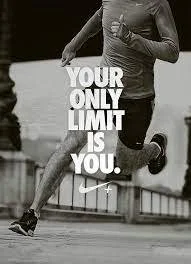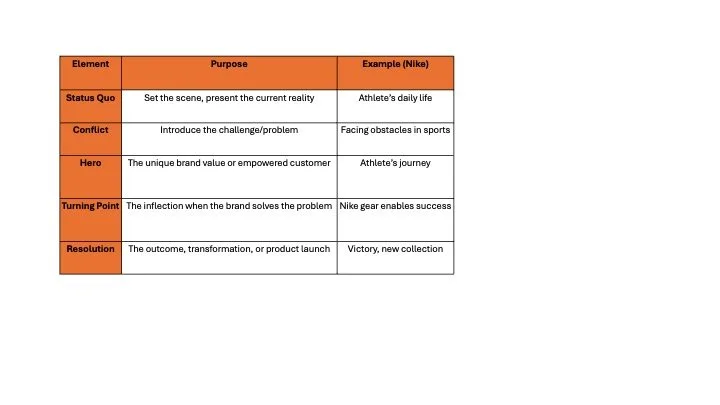How to tell a brand story
Telling a brand story is about being able to connect the brand's purpose with consumers. There is scientific evidence to prove that stories stay in people's memory. However, with multiple media platforms , it becomes imperative to choose where to tell the brand story.
So, how do you choose the platform to tell your brand story and modify the story for different platforms. The solution lies in framing the story first and then selecting the best platform for it. The key success factor here is how you tell your story and not necessarily the choice of the platform.
NIKE’s communication is all about the athlete. Their journey and the role that Nike plays in it.
A simple framework can help brands plan this.
1. Frame the story first: - It's about ensuring that your brand story has all the elements. Start with a status quo,the existing situation. Next talk about the conflict resolution. That is how does your brand solve the problem at hand. The critical part in crafting the story is - what is the HERO of the story. And more importantly, what is the turning point of the story?
The packaging of your brand story, put together in this way, is storytelling. Honestly, brands were doing it earlier also; they were using different frameworks to do it. It’s now being called storytelling simply because you almost subtly feed your product into it. Content marketing in a new way.
Any good brand story has the following elements:
The PLOT - This explains what the brand does. Its your rough work, what you write in discussion rooms,board rooms. If its a laundry detergent. Then how exactly does it wash clothes? If it's a chocolate -the process or it being a an indulgence product. If you are a realty brand- then what all do your project contains.- Commercial, residential.
Its like a map of the place you want to go, and what the journey will be. For laundry detergent, Surf, the plot is that it is a tool to wash clothes. That's where they draw the boundary- physically. For Coke , the plot is its a tool to give you refreshment, with a taste that's different from others. Nike's plot is sports wear and accessories- everything to do with sport.
Why use this framework?
Its the way you tell the story. Thats how CONTENT marketing has come about now.
Its about showing what role your brand can play in the challenge/opportunity.
The Narrative - What you want to achieve. This is the critical element. The purpose. If your brand wants to focus on nutrition, then that’s the narrative. If you are changing the way people shop for clothes, then your narrative is the process- enabling choice for example. Nike’s narrative has always been action - about believing in yourself and showing up. Just doing IT. Surf’s narrative has been that dirt is also good. So for Surf, the plot is about a tool to wash clothes, and the narrative is that it believes that stains are good. For Coke, along with refreshment, it believes it's the 'real magic', that's the narrative it wants to build across its communication.
The HERO - What is it that makes your brand unique? What is the HERO element? For brand Nike, in every communication, they HERO the athlete's process, the focus is on the athlete's journey, not necessarily the 'product'.
The Hero element for Surf, the laundry detergent, is the claim that they can wash 100% of claims is what they want to hero. For the design platform,Canva, the hero element is that non-designers can use it. They hero the fact that their platform is for non-designers.The Launch- What are you selling? What is it that you provide? What is the end result? Almost like the ending of any story. What happens at the end. For Nike. it could be a new product launch. Your product/launch/service could change. Your story must remain consistent. For an apparel brand, it could be a new collection.
The turning point- Most important element. The inflection point when the HERO solves the problem or makes the story come alive. That's your inflection point. For Nike, its when Nike's products enter the athlete's journey. For surf, the laundry detergent its about when the clothes come out clean. For Coke, the turning point is when the consumer is drinking the beverage.
Why is it important to have a story? Because you get believers, disbelievers. You get followers or not. It's a worldview that people believe in, that you show them with your brand as the HERO in some way. As the famous marketer Seth Godin states, 'All marketers tell a story'.
Make it stand out
That's what the point of a story is. You either like it. Or don't. You either feel it's far-fetched or believable.
Once you have all these elements and have crafted them in a story, telling the story using the different media platforms becomes important. For this, brands must choose where to tell what part of the brand story. The following framework can help:
- Digital Platforms: Categorise digital as Video, Search,Social. Develop a audiovisual of your brand story and keep a long form and short form. Now, use the long form for YouTube (video), short form for Instagram (social). For search, simply use your plot. If you are a laundry detergent, then just use the HERO element in the keyword search as part of your story. Do not modify the long form to fit the short form. Create different parts for both. It's painstaking but worth it.
The website is where you tell your brand story in detail. Every element- the hero,the narrative,the plot. Make it illustrative. Make it exhaustive. Every opther platform keep it short. For Instagram, you could create separate content for each element of your story.
- Traditional platforms : Categorise it as reach versus engagement. On television, its about reach so use the long form, use your marketing budget here and use the long form in commercials. For print, use the HERO element, highlight it, if budgets permit, then could use similar creatives like instagram and publish different parts of the story. For outdoor, the plot and the narrative could be highlighted with the objective of drawing consumers to your digital platforms to view the full story. That would help in creating engagement.


